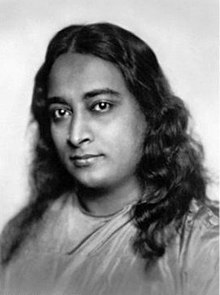imported>Chunbum Park |
imported>John Stephenson |
| (125 intermediate revisions by 5 users not shown) |
| Line 1: |
Line 1: |
| == '''[[Associated Legendre function]]''' ==
| | {{:{{FeaturedArticleTitle}}}} |
| ----
| | <small> |
| | | ==Footnotes== |
| | |
| In [[mathematics]] and [[physics]], an '''associated Legendre function''' ''P''<sub>''ℓ''</sub><sup>''m''</sup> is related to a [[Legendre polynomial]] ''P''<sub>''ℓ''</sub> by the following equation
| |
| :<math>
| |
| P^{m}_\ell(x) = (1-x^2)^{m/2} \frac{d^m P_\ell(x)}{dx^m}, \qquad 0 \le m \le \ell.
| |
| </math>
| |
| Although extensions are possible, in this article ''ℓ'' and ''m'' are restricted to integer numbers. For even ''m'' the associated Legendre function is a polynomial, for odd ''m'' the function contains the factor (1−''x'' ² )<sup>½</sup> and hence is not a polynomial.
| |
| | |
| The associated Legendre functions are important in [[quantum mechanics]] and [[potential theory]].
| |
| | |
| According to Ferrers<ref> N. M. Ferrers, ''An Elementary Treatise on Spherical Harmonics'', MacMillan, 1877 (London), p. 77. [http://www.archive.org/stream/elementarytreati00ferriala#page/2/mode/2up Online].</ref> the polynomials were named "Associated Legendre functions" by the British mathematician [[Isaac Todhunter]] in 1875,<ref>I. Todhunter, ''An Elementary Treatise on Laplace's, Lamé's, and Bessel's Functions'', MacMillan, 1875 (London). In fact, Todhunter called the Legendre polynomials "Legendre coefficients". </ref> where "associated function" is Todhunter's translation of the German term ''zugeordnete Function'', coined in 1861 by [[Heinrich Eduard Heine|Heine]],<ref> E. Heine, ''Handbuch der Kugelfunctionen'', G. Reimer, 1861 (Berlin).[http://books.google.com/books?id=YE8DAAAAQAAJ&pg=PA3&dq=Eduard+Heine&hl=en#PPR1,M1 Google book online]</ref> and "Legendre" is in honor of the French mathematician [[Adrien-Marie Legendre]] (1752–1833), who was the first to introduce and study the functions.
| |
| | |
| ===Differential equation===
| |
| Define
| |
| :<math>
| |
| \Pi^{m}_\ell(x) \equiv \frac{d^m P_\ell(x)}{dx^m},
| |
| </math>
| |
| where ''P''<sub>''ℓ''</sub>(''x'') is a Legendre polynomial.
| |
| Differentiating the [[Legendre polynomials#differential equation|Legendre differential equation]]:
| |
| :<math>
| |
| (1-x^2) \frac{d^2 \Pi^{0}_\ell(x)}{dx^2} - 2 x \frac{d\Pi^{0}_\ell(x)}{dx} + \ell(\ell+1)
| |
| \Pi^{0}_\ell(x) = 0,
| |
| </math>
| |
| ''m'' times gives an equation for Π<sup>''m''</sup><sub>''l''</sub>
| |
| :<math>
| |
| (1-x^2) \frac{d^2 \Pi^{m}_\ell(x)}{dx^2} - 2(m+1) x \frac{d\Pi^{m}_\ell(x)}{dx} + \left[\ell(\ell+1)
| |
| -m(m+1) \right] \Pi^{m}_\ell(x) = 0 .
| |
| </math>
| |
| After substitution of
| |
| :<math>
| |
| \Pi^{m}_\ell(x) = (1-x^2)^{-m/2} P^{m}_\ell(x),
| |
| </math>
| |
| and after multiplying through with <math>(1-x^2)^{m/2}</math>, we find the ''associated Legendre differential equation'':
| |
| :<math>
| |
| (1-x^2) \frac{d^2 P^{m}_\ell(x)}{dx^2} -2x\frac{d P^{m}_\ell(x)}{dx} +
| |
| \left[ \ell(\ell+1) - \frac{m^2}{1-x^2}\right] P^{m}_\ell(x)= 0 .
| |
| </math>
| |
| One often finds the equation written in the following equivalent way
| |
| :<math>
| |
| \left( (1-x^{2})\; y\,' \right)' +\left( \ell(\ell+1)
| |
| -\frac{m^{2} }{1-x^{2} } \right) y=0,
| |
| </math>
| |
| where the primes indicate differentiation with respect to ''x''.
| |
| | |
| In physical applications it is usually the case that ''x'' = cosθ, then the associated Legendre differential equation takes the form
| |
| :<math>
| |
| \frac{1}{\sin \theta}\frac{d}{d\theta} \sin\theta \frac{d}{d\theta}P^{m}_\ell
| |
| +\left[ \ell(\ell+1) - \frac{m^2}{\sin^2\theta}\right] P^{m}_\ell = 0.
| |
| </math>
| |
| | |
| ''[[Associated Legendre function|.... (read more)]]''
| |
| | |
| {| class="wikitable collapsible collapsed" style="width: 90%; float: center; margin: 0.5em 1em 0.8em 0px;"
| |
| |-
| |
| ! style="text-align: center;" | [[Associated Legendre function#Reference|notes]]
| |
| |-
| |
| |
| |
| {{reflist|2}} | | {{reflist|2}} |
| |}
| | </small> |

Paramhansa Yogananda circa 1920.
Paramhansa Yogananda (5 Jan 1893–7 Mar 1952) was one of the first Indian teachers from the Hindu spiritual tradition to reside permanently in the West, and in particular, he was the first to teach yoga to Americans. He emphasized the universality of the great religions, and ceaselessly taught that all religions, especially Hinduism and Christianity, were essentially the same in their essence. The primary message of Yogananda was to practice the scientific technique of kriya yoga to be released from all human suffering.
He emigrated from India to the United States in 1920 and eventually founded the Self-Realization Fellowship there in Los Angeles, California. He published his own life story in a book called Autobiography of a Yogi, first published in 1946. In the book, Yogananda provided some details of his personal life, an introduction to yoga, meditation, and philosophy, and accounts of his world travels and encounters with a wide variety of saints and colorful personalities, including Therese Neumann, Mohandas K. Gandhi, Luther Burbank, and Jagadis C. Bose.
Paramhamsa, also spelled Paramahamsa, is a Sanskrit title used for Hindu spiritual teachers who have become enlightened. The title of Paramhansa originates from the legend of the swan. The swan (hansa) is said to have a mythical ability to sip only the milk from a water-and-milk mixture, separating out the more watery part. The spiritual master is likewise said to be able to live in a world like a supreme (param) swan, and only see the divine, instead of all the evil mixed in there too, which the worldly person sees.
Yogananda is considered by his followers and many religious scholars to be a modern avatar.
In 1946, Yogananda published his Autobiography of a Yogi. It has since been translated into 45 languages, and in 1999 was designated one of the "100 Most Important Spiritual Books of the 20th Century" by a panel of spiritual authors convened by Philip Zaleski and HarperCollins publishers.
Awake: The Life of Yogananda is a 2014 documentary about Paramhansa Yogananda, in English with subtitles in seventeen languages. The documentary includes commentary by George Harrison and Ravi Shankar, among others.[1][2]
